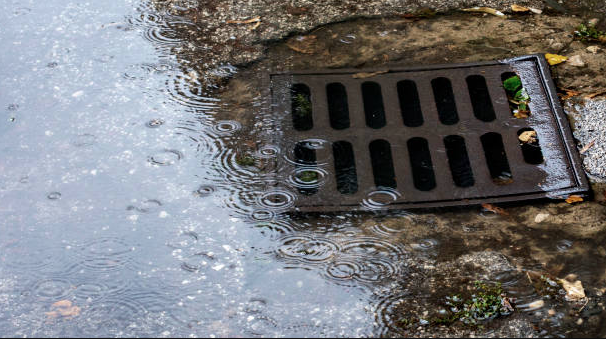Clogged drains are one of the most common plumbing issues in homes, but the consequences go far beyond inconvenience. A clogged drain overflow can release large amounts of water onto floors, into walls, and through ceilings if not stopped quickly. Whether it’s a backed-up tub, a bathroom sink, or a slow kitchen drain that finally gives out, the water has nowhere to go but out, and that creates an urgent need for proper cleanup.
Once water starts flowing over the edge of a sink, tub, or floor drain, it follows the easiest path downward. On tiled floors, it may seem like the grout and sealant will keep it contained, but water almost always finds its way into corners, under cabinetry, and into gaps around baseboards. That’s where the real damage begins. If water seeps beneath vinyl or laminate, the floor can warp or lift within hours, requiring full floor water damage repairs.
The overflow itself may start as a few puddles, but left unattended, it spreads across adjacent rooms. This is especially true if the water source is left running, which can happen easily in households with children or when a clog is discovered too late. In multistory homes, an upstairs overflow can leak through the subfloor and damage ceilings below. This leads to widespread flood damage cleanup, not just drying a single area.
The first priority in any overflow is to stop the source. If a fixture is actively backing up, turning off the water supply is critical. In some cases, that means shutting off the valve below the sink or using the home’s main shutoff. After that, professional water extraction & removal should begin as soon as possible. The longer water sits, the more it seeps into materials that are not designed to get wet.
Clogs usually occur due to buildup in pipes from hair, grease, soap residue, or debris. When pressure builds behind the clog, it forces water back up and out. This overflow may carry waste or contaminants, which means water damage cleanup isn’t just about drying—it also requires sanitization. Cleaning up visible water while leaving moisture under flooring or behind walls invites long-term problems.
Sometimes, overflows are caused by a secondary issue like a broken pipe downstream from the clog. In this case, pipe leak cleanup service becomes necessary along with full inspection of the entire line. A minor clog might mask a more serious underlying condition, such as shifting plumbing or a cracked pipe that will continue to leak even after the blockage is cleared.
When overflow occurs near a bathroom, it’s not uncommon for a toilet overflow cleanup or shower & tub overflow to happen at the same time due to shared drain lines. One clog can affect multiple fixtures, and without a quick response, the water can spread through walls and floors, compromising structural integrity.
Once the visible water is extracted, attention must turn to moisture detection. Using thermal imaging and moisture meters, restoration professionals can locate hidden water behind drywall and under subfloors. These areas often require targeted drying and, in some cases, demolition and replacement. Structural restoration comes into play when framing, insulation, or drywall has been saturated.
Overflowing kitchen drains pose unique risks. A kitchen sink overflow often contains food particles, grease, and bacteria, making the situation not only a cleaning job but a health risk. Cabinets can swell and become soft from exposure, leading to permanent damage unless properly dried and treated. Nearby appliances may also be affected if water seeps into their electrical components, triggering the need for appliance leak cleanup as part of the restoration.
In many homes, a clogged drain isn’t discovered until after an event like a storm and wind damage cleanup is already underway. When multiple issues occur simultaneously—such as roof water entering the home and plumbing systems backing up—the situation escalates. In these cases, storm damage restoration must be coordinated with internal water mitigation to fully dry and restore the property.
Basement drains can also become overwhelmed during heavy water use or storms, leading to gray water rising up and flooding the lower levels. If this water contains sewage or waste, sewage removal & cleanup must be handled using proper containment and safety measures. The materials in basements—concrete, carpet, drywall—are all highly absorbent, making thorough drying and disinfection essential.
If water from a clogged overflow reaches electrical areas, it adds another level of urgency. Power may need to be cut, and fixtures inspected for safety. Restoration is not just about drying what you can see, but ensuring the entire system is safe and functional afterward.
Homes with older plumbing are especially vulnerable to burst pipe damage cleanup, as the pressure from repeated clogs can eventually crack or rupture weakened lines. Regular maintenance and inspections can help avoid these situations, but when they happen, the repair cost is far greater than preventive care.
Property Craft works fast to contain overflows, extract standing water, and assess the full impact of a clogged drain overflow. We don’t just mop and dry—we use advanced drying technology to reach moisture that gets trapped behind surfaces, ensuring no hidden damage remains. From the first sign of water to full restoration, we deliver care, precision, and a sense of urgency to every job.
If you’ve experienced a clogged drain that led to overflow, don’t wait for signs of damage to show. Let our team take care of it now, and restore your home before a small problem turns into a big one.

